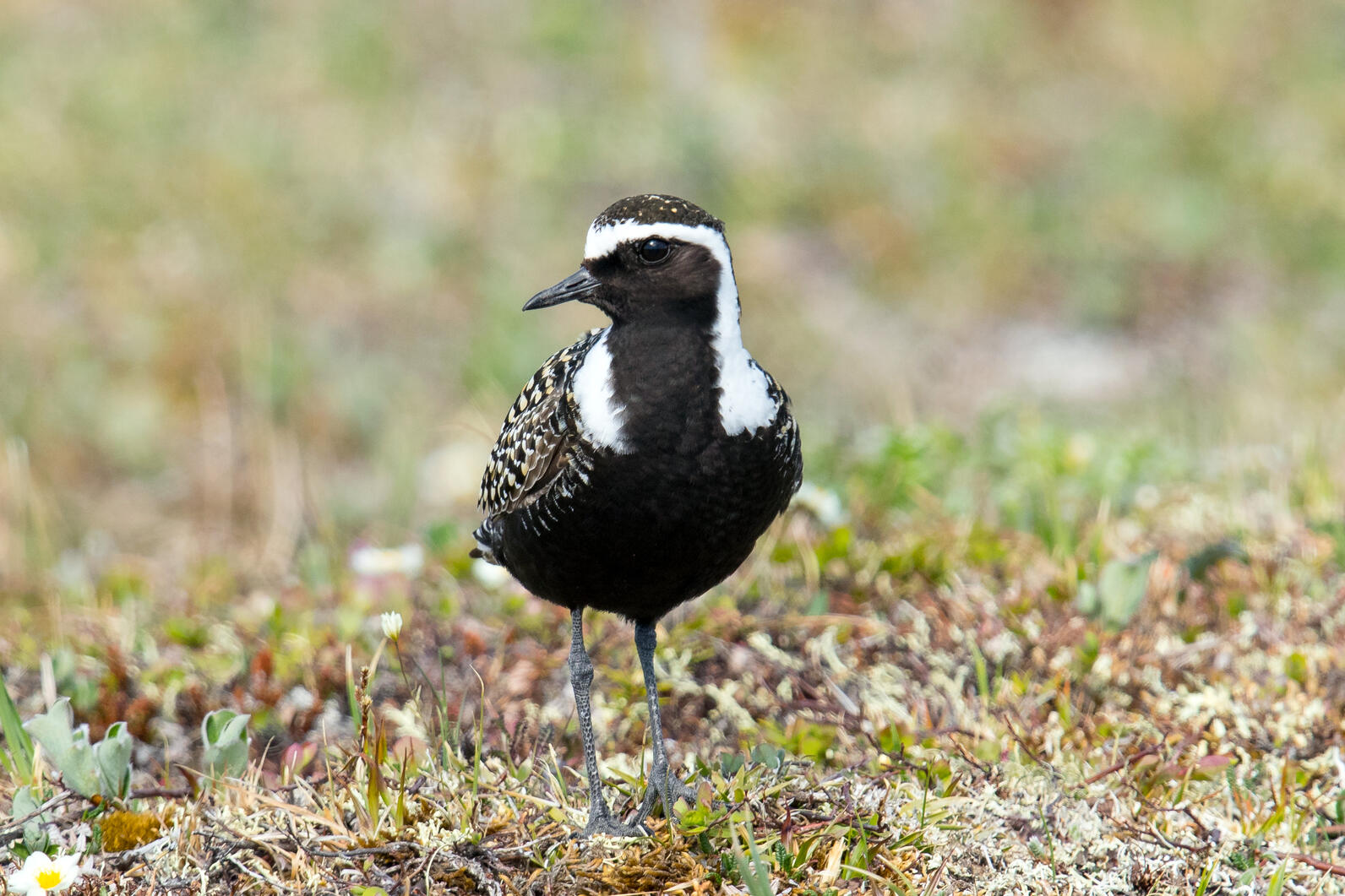The American Golden-Plover— a medium-sized, black-bellied wading bird—makes one of the longest migration journeys of any bird. The species completes an elliptical migration pattern, with a post-breeding (south-bound) transoceanic route over the western Atlantic, and a pre-breeding (northbound) mid-continental route through the Americas. Its journey starts in the Alaskan Arctic, courses through northern Canada to the northeastern United States, darts across the Atlantic Ocean, and winds up in Argentina. To return—no big deal—it cuts through northern South America, across the Gulf of Mexico, through the middle contiguous U.S., then Canada, and returns to the Arctic tundra.
And how do we know all this? Through science-driven, data-collecting efforts like the upcoming American Golden-Plover Southbound Migration Project.
Audubon Alaska, in collaboration with Audubon Boreal and Audubon Americas, and in partnership with Manomet, Inc., U.S. Fish and Wildlife Service–Alaska region, and other organizations, will equip eight American Golden-Plovers with 3.5-gram PinPoint GPS Argos tags (the world’s smallest GPS Argos tags). Tags will be fitted while on the nest during early incubation at Teshekpuk Lake Special Use Area in the National Petroleum Reserve-Alaska in June.

The project will highlight the importance of migratory bird habitat by following the migration journey. Think post-breeding locations, staging areas, and stopover sites, and how the conservation of those places is vital to complete transoceanic migrations. This summer, during the post-breeding period, we’ll possibly detect the marked birds in the foothills of the Brooks Range or the Foxe Basin Peninsula in Canada. In late summer, focus may shift to Hudson Bay and spots in New England. And from August through December, we’ll be following along through the upper Amazon in Brazil and coastal grasslands in Uruguay.
By tracking these eight individuals, we hope to underscore important work, like the Program for Regional and International Shorebird Monitoring (PRISM), an intenational collaborative science and bird population estimate and trend monitoring program, and its current implementation in the Americas. On the conservation side, we’ll spotlight threats like oil and gas development, human disturbance, and climate change to the Arctic tundra—an essential region for breeding and migration.
Finally, we’ll tell the story of accelerating declines of North America’s shorebirds, and how urgent conservation solutions are needed. The American Golden-Plover is a focal species for Atlantic and Midcontinent shorebird initiatives, and we’ll share what programs, actions, and volunteer opportunities may be available. Stay tuned to Audubon Alaska’s communications for more





